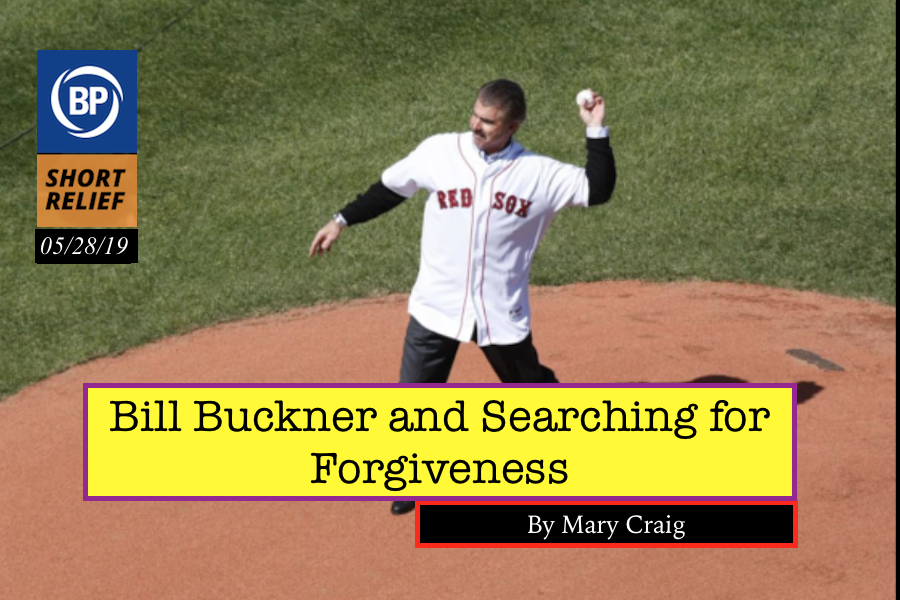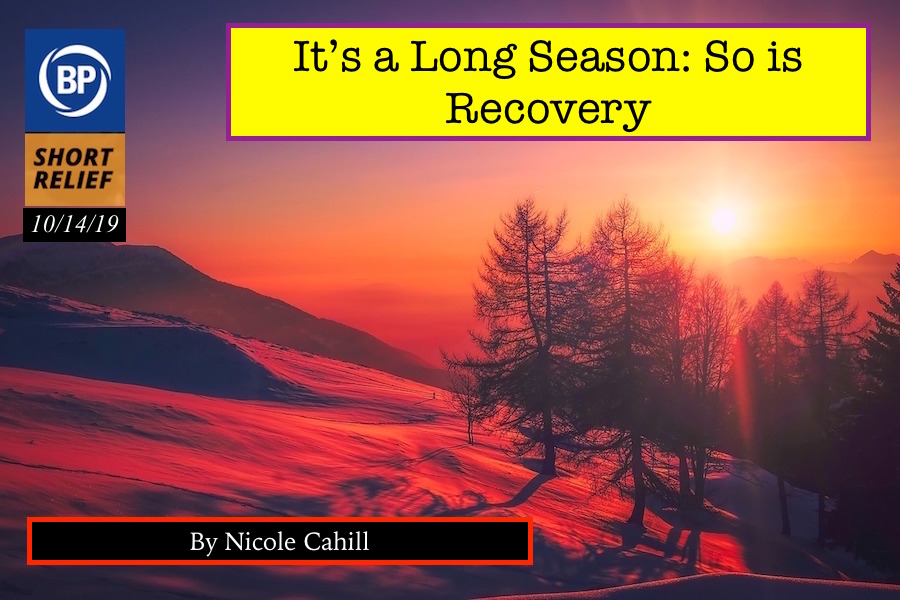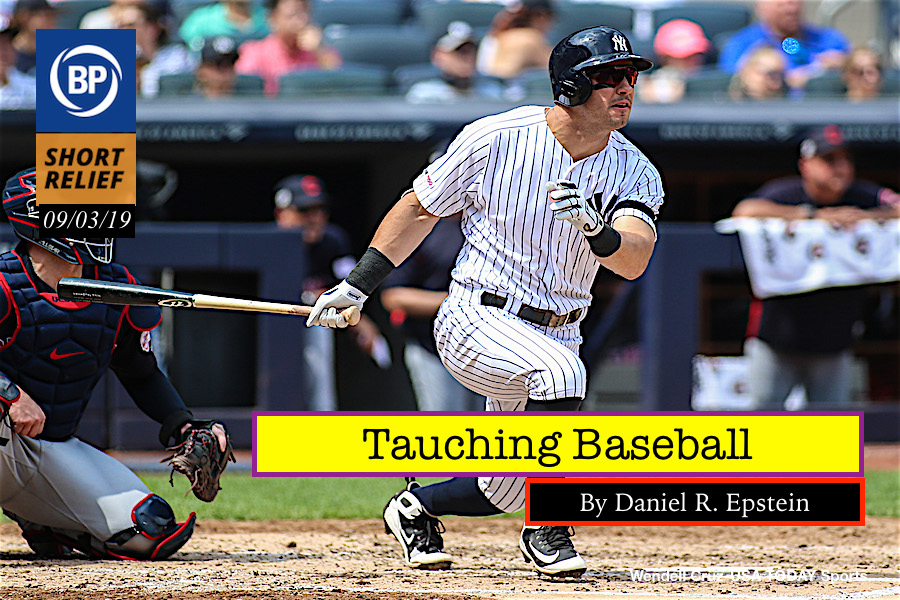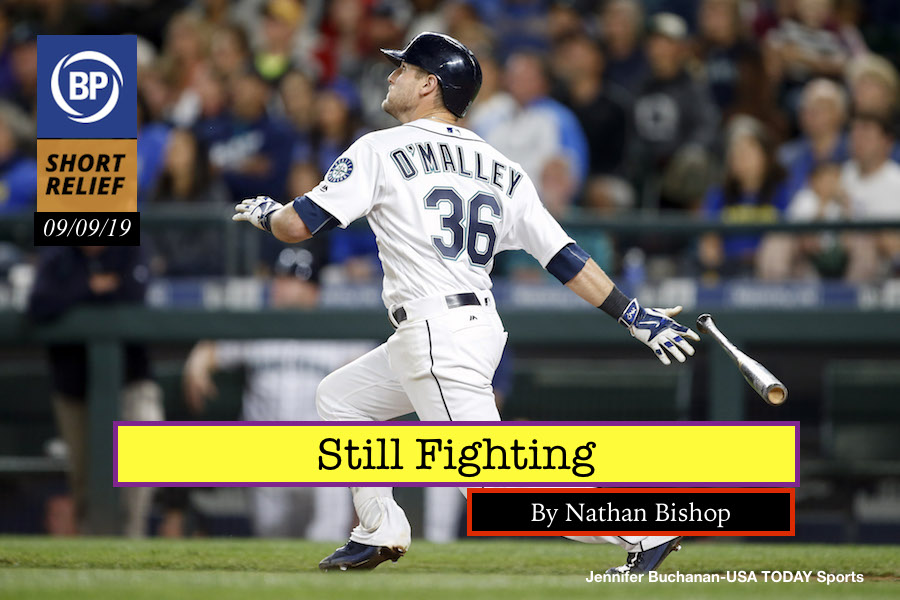
Life is more or less a series of mistakes, and atonement for these mistakes. Some are so miniscule that forgiveness is a foregone conclusion. Others are so damaging and irreversible that asking for forgiveness seems foolish no matter how many decades have passed. The closer we come to the end, the more heavily our mistakes weigh on us and the more dire it becomes to both grant and receive forgiveness.
Some instances of forgiveness are so deeply personal that to onlookers, it would seem utterly foolish to forgive, but to those involved, forgiveness is the only available course of action. In these moments, forgiveness occurs on the basis of who committed the action rather than what was done. Then there are those actions that affect a great number of people, public or political actions, the ramifications of which are passed down through generations until they come to define both the perpetrator and victim. As each generation comes of age, they assume responsibility for the actions of previous generations, and the act of atonement becomes central to their identity as a group. These quests for forgiveness are often more complex, lengthy, and arduous than those of the individual, with the end goal remaining obfuscated until it is finally reached.
Since the 1986 World Series, Red Sox fans have been a part of this public search for forgiveness. The first attempt occurred in 1990, when the Fenway crowd gave Bill Buckner a standing ovation on his return to the team as a free agent. It was unclear whether the crowd was asking for forgiveness, however, or granting it to Buckner. And so the years passed and young Red Sox fans learned the lore of Buckner’s error and all the pain that came with it. Then 2004 happened, and the Red Sox were no longer perpetual losers. And soon after followed 2007 to prove that 2004 was not a fluke and would not begin 86 new years of failure. There was no longer a need to bury ourselves in pain in order to derive our identity, and the wounds from ‘46, ‘67, ‘75, and ‘86 dissipated.
So Buckner returned to Fenway as a guest in 2008 for the first time since 1990. He threw out the first pitch to a two-minute standing ovation from a crowd that had finally figured out victim and perpetrator. When asked about his appearance, Buckner replied that he had forgiven Boston for all it had put him and his family through. He never returned to Fenway, but his chapter had ended.
With his death 11 years later, it seems like the Red Sox’s chapter has reached its natural conclusion. But it’s not so easy. The legend of Buckner and his poor treatment at the hands of fans and media will continue to be part of Red Sox history, and each new generation of fans will have to contend with its lessons. Perhaps only when there is no longer the possibility of another life reduced to the object of bitterness and vitriol will the Red Sox have earned Buckner’s forgiveness.

Content warning: discussion of mental health and suicidal thoughts.
There are days I wake up and the only work I get done is basic self-care. It seems so far removed now, but a year and a half ago I was fighting to save my life. Depression and anxiety gripped me like Jonathan Papelbon gripped Bryce Harper’s neck in the Nationals dugout.
As Spring Training gets going, you could find me basking in the sunlight of the small, cozy Florida ballparks. During the Opening Series this season, I arose much too early to catch some of the A’s-Mariners series in Japan and one last glimpse of Ichiro. For the first time in a long time that morning, I felt like I truly belonged somewhere. I was watching the game with a trusted friend. As someone with social anxiety, this closeness and comfort is something I don’t often find in other people.
As the regular season rolls in, the sense of belonging intensifies. Every night my mood dips immensely and uncomfortable thoughts creep in. Baseball is my saving grace. Having something to turn on each night gives me a sense of peace. Every night for about six months, I feel safe.
When the playoffs come, a bittersweet feeling presents itself. I witness the best and most exciting baseball of the year, but know it will soon be over. I stay up all night until the final out of the last game of each October evening because of this. I act like a bear about to hibernate for the winter — I must consume as much baseball as possible to sustain me through the long and slow offseason. I am not a bear, sadly. Not even Pete Alonso. I cannot just choose to sleep through the most difficult season of my life. Recovery from a mental illness doesn’t give me that luxury. All I can do during these moments is whatever it takes to fight to keep going. I’ve learned to use that free time to practice the skills I’ve learned in therapy, as well as catch up on my reading, do some writing, and yes, play Strat-O-Matic. I even joined a slow-pitch softball league. Don’t get me wrong: Life is better with baseball. But now, I’m learning to find the little joys in life away from the game.
Still, the holiday season remains challenging for me, as it is for many. I’m supposed to be happy, so I feel guilty for not being happy. It’s an endless cycle that has taken years of therapy to attempt to stop. I suspect my mood dips during the winter because of the lack of baseball in my life. The games have ended, and not much is happening. My mood grows more upbeat, fittingly enough, around the middle of February, when I realize what I love is returning.

When you’re a kid you can’t understand walls.
Each building in a child’s life
Feels like a monument, built in prehistory
And designed to outlive us. Cinder block
Elementary schools and brick fire stations and
Stained glass windows, houses, homes.
Then you get to be an adult and you learn
What a lie drywall is, how easily we can cut
And gouge and patch it. A drunken fist
Is gone a day later, the local music store
Becomes a fluorescent-lit pharmacy.
You can’t even tell what used to be there. Seamless.
Eventually it’s all torn down, burned, reforged,
Repainted, expanded, reimagined.
Your childhood buildings, like your childhood family,
Disappear overnight. Your father becomes a vape store.
They flatten the building where you watched baseball
And years later, you remember you left something there.
You spend years thinking about this
With your knees in the soil, pulling weeds
In your uneven, average lawn. You never change it
Not because it’s perfect, or even beautiful
But so that when you remember it, you remember
All those lawns at once, a single image, fixed.
Your children play around you and swing sticks
All while a hundred bad baseball players
Who never knew your childhood baseball home
Fly from the radio and embed themselves in the soil:
Figgins. Langerhans. Saunders. The other Saunders.
Invisible, meaningless, inseparable,
Designed to be grass stains on tiny knees
Long after your own walls have come down.

I have a friend named Mat who has taken an interest in baseball for the first time since we played together in Little League. He entrusted me to guide him through the baseball season, answering questions and explaining as much of the sport as I can. About once a week since Spring Training, we’ve waded through the ocean of children’s toys in my basement to watch the Yankees on my second-hand couches.
It’s a unique experience to teach baseball from scratch to a rational, semi-intelligent adult (I shouldn’t compliment him too much; he’ll probably read this). We can go directly from a nuanced labor discussion of the MLBPA collective bargaining agreement to, “What is Triple-A?” I’ve suffered several curricular dilemmas as well. For example, do I need to explain batting average at all, or can I jump straight to DRC+? What about everything in between, like OPS? There’s no syllabus here.
Our biggest teacher-student disagreement occurred on April 16th, when Mat selected his favorite player. The entire Yankee outfield — Giancarlo Stanton, Aaron Hicks, and Aaron Judge — was injured. They acquired some random Quad-A fill-in from Colorado at the end of March named Mike Tauchman, who was forced to play nearly everyday for lack of healthier options. He entered the game 2 for 16, but hit a home run and a double that day.
It doesn’t take long for even the most amateurish fans to become scouts. “This Tauchman guy is pretty good!” noted Mat. That observation set off hours of bickering, as I VERY CORRECTLY explained that even the worst players can have a good day. Tauchman was a blip on the radar who we’ll have forgotten entirely by July. He was indisputably NOT a good major leaguer. After all, I’ve been studying the sport for more than 30 years, and players don’t suddenly become stars at age-28.
Tauchman hit his second home run two games later, and another the following day. Mat and I argued via text after each one. By the end of the week, I was actively rooting against the starting left fielder on my favorite team, just to prove a point to my oldest friend. This drove Mat into a deeper love-fest with a player I was quite certain would fade into oblivion.
Of course I was wrong. Tauchman slashed .423/.474/.750 in July, and stayed hot through August.
In my quest to prove how VERY CORRECT I was, I forgot baseball’s one truth: none of us know anything. A person can spend an entire lifetime in baseball, and on their deathbed, the unknown will immeasurably outweigh the known. The only absolute is that as soon as we think we know something, we will soon be proven wrong. I am now aware that I know almost nothing about baseball. None of us do.
I could be wrong about this, or anything really, but I’m starting to think Mike Tauchman might be pretty good. Don’t tell Mat.

Gleyber Torres awakens in an alternate universe. In this new, unglamorous realm, the 22-year-old is no longer a star for the mighty Yankees. Instead, he’s traded his pinstripes for the trappings of a standard early-20s existence.
Swimming in debt and unshakable ennui, Torres climbs out of his partially deflated air mattress and rubs his eyes. It’s 10:48 am on a Tuesday. In two hours he will start his shift at the neighborhood coffee shop before a night of making Postmates deliveries. The gig economy, set to the soundtrack of coffee grinders and Torres’ curated Mitski playlist, is a much more humbling way to make a living than playing second base in New York.
Torres digs up his trusty laptop. It’s the same one he’s had since junior year of high school, and today it’s buried beneath stacks of pizza boxes and the only towel he owns. Torres pulls up Google and types “What grad schools are good?” Maybe, he thinks, this life of debt and burnout can be rectified by more debt and more overexertion.
Torres gets a text. It’s from a romantic partner that he met in an Uber pool. They’ve never hung out in the daytime, and after two weeks of late-night meetings, Torres has just learned their last name. “I’m moving to Austin,” the text reads. “My cousin had to kick one of her seven roommates out because they wouldn’t stop brewing kombucha in the garage. Sounds like they’re fully cancelled. But I get their room!”
Torres, dejected, reaches for his phone. The cracked screen carves a banana-shaped cut into his skin. Sucking his thumb to stop the bleeding, Torres summons the App Store and punches in “Tinder”. He sets the age range up to 35, because despite his youth, Torres has been feeling very mature, and not only because he can finally drink wine without immediately falling asleep. The first potential love interest is a 33-year-old corporate sales manager.
Their bio is a simple one-sentence instruction: “Swipe right if you have a good credit score”. Torres, who ditched a physical wallet in favor of a cryptocurrency and Venmo-based financial strategy, doesn’t even fully understand how credit cards work. Back to Google, this time to search “Credit scores that make you sound rich”. He settles on the message “What’s your favorite Philip Roth novel?”, hoping to reveal his sophisticated intelligence.
Only 90 minutes until work now. This gives Torres, he figures, enough time to either knock out a few small tasks (join DSA, go viral, place a bulk order for Top Ramen, buy second towel), or one big one (start a podcast, apply for jobs with healthcare, find an apartment with washer and dryer). The mere act of looking at his to-do list feels like a completed chore. Torres decides he’ll get to this tomorrow, and plops back on the air mattress for a well-deserved nap, dreaming of a life where he actually cashed in on his early trajectory as a promising, gifted child.

Ken Griffey Jr. said “keep fighting”, and it just so happened that Shawn O’Malley was happy to oblige. The 2016 Mariners were a fun, flawed team stuck in a rut. Their hot start had ebbed due to injury and the white hot Texas Rangers. Griffey, on the night his number 24 was raised to the Safeco Field rafters, was trying to inspire. The son of a major leaguer, a first overall pick, and one of the five or so most famous baseball players of the past thirty years, Griffey was uniquely and historically notable for how effortless he made baseball look.
Good stories need narratives, however, and the most famous athlete in Seattle sports history inspiring a local boy to hit the biggest home run of his life for the hometown nine is a pretty good one, as narratives go. The Mariners won, and 40,000 fans chanted “O’Malley! O’Malley!” for a skinny, minor league-lifer from Kennewick, Wash., and a marketing campaign was born. If it were a movie the Mariners would have kept winning, made the playoffs, and inspired a new generation of pacific northwesterners to fall in love with baseball. But it wasn’t a movie, and the 2016 Mariners missed the playoffs on the second to last day of the season. Thanks for attending.
***
There are two different ways to phrase what happened to O’Malley on November 6th, 2017. Baseball Reference says he was “granted free agency”, which reads as though the Mariners freed him from bondage. (As a lifelong Mariners fan, I can identify with this.) By contrast Wikipedia states that O’Malley “elected free agency”, and this is the phrasing I prefer. It imparts a sense of ownership over our own narrative. It allowed you, maybe just for a little bit, to believe you’re actually free.
***
About 30 minutes due west of Kauffman stadium lies JustBats Field at T-Bones Stadium, home of the Kansas City T-Bones, and the current home of Shawn O’Malley. His teammates include recognizable names such as Jose Mesa Jr., Chris Colabello, and Daniel Nava. The organization has leaned into its role as a halfway house for lost baseball players, with an entire page dedicated to those fortunate few whose performance as T-Bones merited a return to MLB-affiliated baseball. It makes sense. Every boy dreams of being a ballplayer, but none dream of being Kansas City T-Bones.
The player pages on the T-Bones website have a wide range of information on offer. Numerous players have nothing listed beyond name, age, position, and hometown. A few of the more recognizable names have a couple paragraphs. Shawn O’Malley has an exhaustive, detailed biography, clocking in at over 1100 words. It chronicles every twist and turn of a life spent in baseball’s waiting rooms. It ends with a shockingly brief summary:
While O’Malley grew up in the Tri Cities of Washington State, he now resides in Overland Park, Kansas.
Shawn O’Malley is hitting .307/.378/.429 for the Kansas City T-Bones. He has a multi-home run game, and hit a walk off single in July that got him a proper, big league iceshower. The Ken Griffey Jr.’s of the world are lionized for saying it, their words turned into hashtags and battle cries, but Shawn O’Malley has never needed to hear it. He’s still fighting. It’s the only way he can survive.
Thank you for reading
This is a free article. If you enjoyed it, consider subscribing to Baseball Prospectus. Subscriptions support ongoing public baseball research and analysis in an increasingly proprietary environment.
Subscribe now